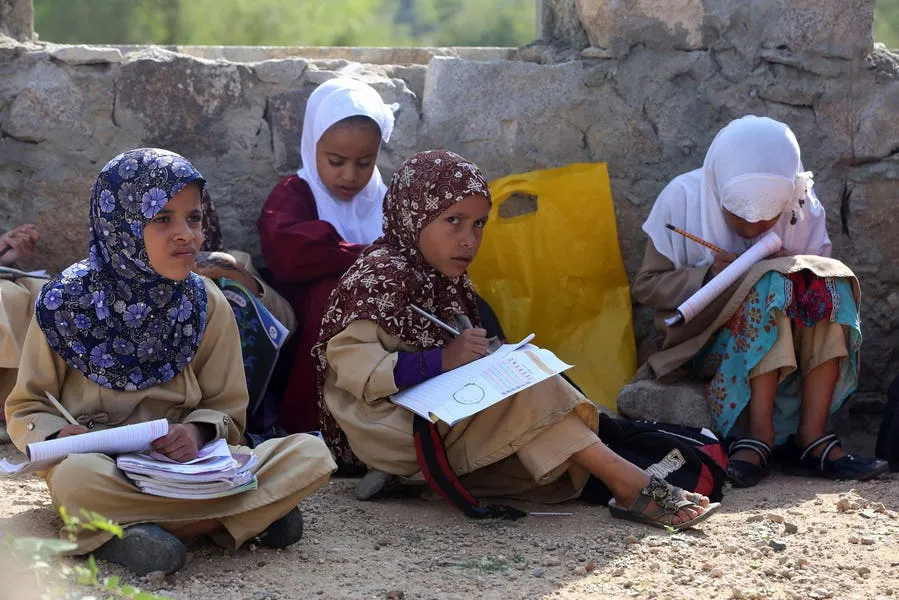Forbes contributors publish independent expert analyses and insights.
When the world's school bells fell silent in March 2020, it wasn't the last time they would. In just the past year, more than 210 million students missed school due to extreme heat waves across 17 countries. Today, over 40% of the world's out-of-school children live in conflict-affected regions, and in the United States alone, 16 million students were chronically absent last year -- often due to poverty, illness or unstable housing. Whether triggered by pandemics, wildfires, war or economic strain, disruptions to education are becoming more frequent, more complex and more globally intertwined.
StudyFetch's growth captures the zeitgeist. Launched in September 2023, the AI-native platform hit 1 million users in just seven months and now partners with Canvas, D2L and Blackboard for one-button onboarding. "Course material is king," says CEO Esan Durani. "Every AI response references the professor's own content, so hallucination risk plummets."
Students average 20 minutes per tutoring session, and professors receive heat-maps revealing which subtopics confused the most students before the next lesson. Tools like Kira Learning and Century Tech offer similar real-time diagnostics, while CoSN's latest survey finds 72% of U.S. districts sustaining 1-to-1 device access even after pandemic relief funds expired.
Progress is real -- but readiness is still uneven.
"Access to hardware, broadband and protections for kids is still patchy -- especially in rural and low-income communities," says Randi Weingarten, president of the American Federation of Teachers. She points to newer contract clauses that allow for remote learning days in lieu of snow days, and she urges districts to mandate at least six to nine hours of AI literacy training for educators before deploying digital tools.
She also stresses that students -- not just teachers -- need targeted support in learning how to navigate and benefit from these tools.
"Teachers are irreplaceable," she emphasizes. "Use algorithms only if they give educators more time with students." Equally important, she adds, is protection from screen fatigue, unvetted edtech platforms and tools that widen the digital divide instead of closing it.
Andreas Schleicher, director for education and skills at the Organization for Economic Co-operation and Development, sees encouraging signs in global LMS adoption -- but warns of a deeper deficit.
"AI is just an amplifier," Schleicher says. "It spreads good ideas -- and bad ones. We are not seeing real progress in students' ability to navigate ambiguity and complexity."
For Schleicher, real readiness means students become self-directed, critical thinkers -- not passive content consumers. He believes the most effective policy lever since 2020 has been engaging teachers as co-designers, not just users, of digital tools.
"Getting teachers actively engaged in the design of digital learning tools has proven far more effective than top-down mandates," Schleicher says.
And when it comes to AI's role in classrooms, he offers a sharp caution: "The real risks do not come from AI, but from the consequences of its application. When a student is flagged by an algorithm, it must still be a human who decides what comes next."
Chris Dede, senior research fellow at the Harvard Graduate School of Education, believes the core challenge isn't technological -- it's conceptual: "The world is irreversibly hybrid. Schools, districts and countries that force all teaching to be face-to-face are dooming their graduates to reduced agency in every other aspect of life."
Dede argues that education must adapt to a broader societal shift: "Hybrid learning isn't just a school strategy. Businesses, families and institutions everywhere now operate across distances. Education must follow."
His research shows that schools already comfortable with technology pivoted quickly when the COVID-19 pandemic struck. But those that hadn't invested in digital capacity-building were left scrambling.
"It wasn't just the tools that mattered," he notes; "it was how fast teachers could build capacity to use them."
Pasi Sahlberg, Finnish educator, author and professor at the University of Melbourne, echoes the need for a mindset shift.
"A big lesson from the pandemic is that learning doesn't stop when kids can't go to school -- it just changes form," he says. "Many students created their own learning systems, often using digital tools and global peer interaction."
Sahlberg sees this as proof of what he calls a "grand misunderstanding" among many education systems -- that students can only learn what adults directly teach them.
But he is quick to add that digital's limits are just as important as its potential.
"Whereas a lot can be learned through digital media, there is a lot that can't," he says. "One of those things is the power of human relationships, face-to-face."
He warns that systems focused solely on content delivery risk missing the heart of education: "Making first-class humans requires a different understanding of what human interaction can do."
Platforms like StudyFetch now let professors build AI teaching assistants -- like "Sparky" -- that reflect their tone, expectations and course materials. Students can play auto-generated learning games, ask follow-up questions and flag confusing topics in real time. Educators then receive anonymized feedback dashboards that inform next-day instruction.
Durani notes that thousands of these learning games were created "within days" of launch. "We started by focusing on student growth," he says. "Now we're designing for both sides -- teachers and learners -- in one feedback loop."
If another emergency forces schools online tomorrow, here's what education systems need ready today:
We've learned a great deal since 2020: one-click onboarding matters, data transparency empowers teachers and learning doesn't have to stop when buildings close. But the real test is still ahead.
As Schleicher reminds us, "AI will amplify whatever we feed it." If we feed it inequity and low expectations, we will magnify the very failures we promised to fix. If we feed it teacher-led design, student agency and real-time support, we may finally deliver what crisis after crisis has demanded: resilience without regression.
Because when the next bell doesn't ring, readiness won't be measured by who logged in fastest -- it will be measured by who kept learning.
